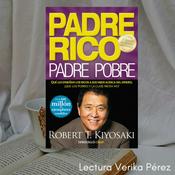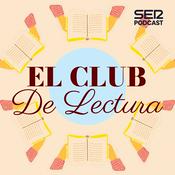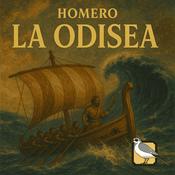112 episodios

Sir Gawain and the Green Knight Fitts 2 and 3 with Dr. Tiffany Schubert
23/12/2025 | 2 h 9 min
Today on Ascend: The Great Books Podcast, Dcn. Harrison Garlick, Dr. Tiffany Schubert of Wyoming Catholic College, George of the Chivalry Guild, and Banished Kent discuss Fitts 2 and 3 of Sir Gawain and the Green Knight!Visit thegreatbookspodcast.com for our reading schedule!Check out our 50 QUESTION-AND-ANSWER GUIDE to Sir Gawain and the Green Knight.Be sure to visit our sister publication, THE ASCENT, for Christian spirituality.Episode SummaryThe panel continues the Christmas reading of Sir Gawain and the Green Knight, exploring Fitts 2 and 3 with Dr. Tiffany Schubert. The discussion covers the meditative passage of time, Gawain’s elaborate armor and pentangle, his wilderness journey, arrival at the lord's castle, and the three bedroom temptations mirroring the lord’s hunts. Themes of courtesy versus Christian prudence, the unexpected location of peril, and human imperfection dominate.Why Sir Gawain and the Green Knight Is Worth ReadingThis poem masterfully redirects chivalric expectations from martial heroism to internal trials of temperance and fidelity, using irony, humor, and subtle symbolism to expose the tensions within knighthood itself. As Dr. Schubert notes, it brings readers “back down into this world”—a murky, incarnate place of comfort and laughter where true danger often hides—while probing whether Christian virtue can govern or perfect courtly ideals. Rich in liturgical resonance, Marian devotion, and realistic grace, it humanizes the heroic quest, making it profoundly relevant for reflecting on temptation, fear, and humility during the Christmas season.Key Discussion PointsTime & Seasons: Opening meditation on cyclical yet forward-moving time; Gawain’s lingering and All Hallows’ departure as liturgical reflection on mortality.Armor & Pentangle: Lavish buildup of Gawain’s gear and “endless knot” (five sets of five perfections, piety surpassing all) as outward ideal—quickly deflated as armor is removed.Mary Inside the Shield: Hidden source of strength and piety governing the public projection of perfection.Wilderness to Castle: Dismissal of monster battles; castle as surprising “answer” to Marian prayer—Providence working through murky, tempting paths.Second Christmas Game: Bertilak’s exchange of winnings parallels the first deadly game, shifting peril to courtesy and domestic temptation.Three Temptations & Hunts: Parallel structure—doe (subtle), boar (fierce), fox (cunning); Gawain resists lust admirably but accepts/conceals girdle out of fear of death.Courtesy vs. Christian Prudence: Repeated bedroom returns (no Joseph-like flight) prolong exposure, allowing lady to exploit deeper flaw—courtesy overriding removal from sin.Confession Ambiguity: Post-girdle absolution raises questions of self-awareness and lingering human frailty.

Sir Gawain and the Green Knight Fitt 1 with Dr. Justin Jackson
16/12/2025 | 1 h 54 min
Today on Ascend: The Great Books Podcast, we are discussing Fitt 1 of Sir Gawain and the Green Knight with Dcn. Garlick, Dr. Justin Jackson of Hillsdale College, Chivalry Guild, and Banished Kent.Check out thegreatbookspodcast.com for our reading schedule.Check out our WRITTEN GUIDE to Sir Gawain and the Greek Knight (posted soon!).Episode SummaryThe panel dives into the 14th-century Middle English masterpiece Sir Gawain and the Green Knight, exploring its mysterious single-manuscript survival, alliterative brilliance, and rich layers of meaning in Fit 1. From the Troy-to-Britain prologue to the shocking arrival of the Green Knight and the beheading game, the discussion uncovers dualities, temptations, and the clash between chivalric courtesy and Christian virtue that make this Christmas tale profoundly relevant.Why Sir Gawain and the Green Knight Is Worth ReadingThis poem stands as one of the greatest works of English literature because it masterfully blends adventure, humor, moral depth, and spiritual insight. As Dr. Jackson notes, it survived by miracle in a single tiny manuscript, yet offers the “greatest chivalric romance” alongside exquisite theological literacy. It probes timeless questions—how do pride, fear, courtesy, and faith collide in a fallen world?—without easy answers, forcing readers to wrestle with their own choices. Tolkien saw it as a meditation on seductive worldly culture versus Christian ethos; the guests highlight its realistic portrayal of human imperfection amid high ideals. Beautifully crafted (alliteration, bob-and-wheel, vivid imagery), often funny, and profoundly Christian, it humanizes the heroic while elevating humility and grace—perfect for Christmas reflection on mortality, temptation, and redemption.Key Discussion PointsManuscript & Poet: A unique survival with Pearl, Cleanness, and Patience; anonymous poet of astounding skill in alliterative revival.Historical Frame: Begins with Troy’s fall and Aeneas (traitor in medieval legend) leading to Brutus and Britain—history as “bliss and blunder.”Arthur’s Court: Young, vital Arthur is admirable yet “somewhat childish,” craving marvels or “life for life” combat.Guinevere’s Gray Eyes: Symbol of wisdom/clarity, yet ambiguous; benchmark of beauty later challenged.Green Knight’s Duality: Terrifying green giant vs. courtly noble—tempting fear/violence vs. courtesy/mercy.The Game: Explicitly “stroke for stroke,” not beheading; court’s violent interpretation reveals failures.Tolkien’s Lens: Tension between seductive chivalric/courtly culture and higher Christian virtue.Gawain’s Intervention: Praised as humble, loyal self-sacrifice to shield Arthur.Notable QuotesDr. Jackson: “The poem is giving you two readings throughout, and then it wants to see which one are you going to appropriate.”Deacon Garlick: “This text captures my imagination… knowledge is an antecedent to love.”George (via Tolkien): “Gawain… as a matter of duty and humility and self-sacrifice.”Resources & RecommendationsTolkien’s translation and scholarly editionJames Winny’s facing-page translationDr. Jackson’s Hillsdale online course lecture (watch after finishing the poem to avoid spoilers)Next episode: Fits 2–3 with Dr. Tiffany Schubert. Join the discussion on Patreon or X!

Plato and Education: The Teacher as a Lover of the Soul
09/12/2025 | 2 h 1 min
Today on Ascend, we discuss Plato, education, the role of the teacher, eros, beauty, and much more drawing from the dialogues First Alcibiades and the Meno. Returning to the podcast, we have Dcn. Garlick, Dr. Frank Grabowski, Dr. Brett Larson, and Thomas Lackey.Visit thegreatbookspodcast.com for our reading schedule.Visit our LIBRARY OF WRITTEN GUIDES to help you read the great books. What does it mean to teach like Plato? In this rich, wide-ranging conversation the panel explores lessons on education drawn from Plato’s First Alcibiades and Meno. The central idea: the true teacher is not an information-dispenser or job-trainer, but a lover of the soul who serves as a living mirror in which the student comes to “know himself” and is drawn toward virtue, happiness, and ultimate beauty.Summary:The conversation revolved around a single, radiant idea: for Plato, the true teacher is not a dispenser of information or a trainer for the marketplace, but a lover of the soul. In First Alcibiades, Socrates positions himself as the living mirror in which the young, ambitious Alcibiades can finally see himself clearly and be drawn toward genuine happiness through virtue. Education is therefore deeply personal, erotic (in the classical sense of an ardent desire for not only pleasure but also nobility and wisdom), and irreducibly communal; self-knowledge is never solitary navel-gazing but requires another soul whose loving gaze reflects one’s own. The panel repeatedly contrasted this rich, teleological vision—where education aims at universal happiness, orders the whole person toward truth, goodness, and beauty, and ultimately points to God as the final mirror—with the thin, “unerotic” reality of modern schooling, which often reduces teachers to talking search engines and students to economic cogs in a materialist machine.A second major thread was the haunting, unresolved tension of the Meno: teaching demands both an able and willing teacher and an able and willing student. Virtue can be cultivated, but it cannot be forcibly downloaded; the student must respond, cooperate, and allow his desires to be re-ordered toward what is truly lovable. This led to broader reflections on beauty, rhetoric, place, and hierarchy: truth is beautiful and therefore insists on being loved; philosophy without rhetoric is impotent, rhetoric without philosophy becomes tyrannical; ugly buildings and disembodied logic deform the soul; natural hierarchy is not abolished by grace but perfected and placed in service of the common good. Throughout, the panel returned to the conviction that genuine education is slow, embodied, relational, and oriented toward the transcendent—an ascent that begins with a teacher who truly sees and loves the soul before him.Key words: Plato, First Alcibiades, Meno, classical education, teacher as lover of the soul, know thyself, virtue, happiness, eudaimonia, beauty, transcendentals, eros, mirror of the soul, rhetoric, philosophy, modern education critique, materialism, teleology, Socratic method, student-teacher relationship, hierarchy, imago Dei, Christian Platonism, and Great Books.This conversation was recorded April 2025.

Grace and the Grotesque: The Lame Shall Enter First by Flannery O'Connor with Dr. Brian Kemple
02/12/2025 | 2 h 21 min
In this episode of Ascend, Deacon Harrison Garlick and Dr. Brian Kemple discuss the violent, grotesque southern tale "The Lame Shall Enter First" by Flannery O'Connor.Visit thegreatbookspodcast.com for our reading schedule!Check out our LIBRARY of written guides to the great books.Check out the Lyceum Institute.They explore O'Connor's life, her unique Southern Gothic style, and the themes of faith, suffering, and the grotesque in her writing. The conversation also touches on the mission of the Lyceum Institute, the significance of characters and their arcs, and the pedagogical purpose of violence in literature. Through their analysis, they highlight the complexities of human relationships and the contrasting desires of the characters, ultimately revealing the deeper truths embedded in O'Connor's work. Through a detailed analysis of specific scenes and character dynamics, the discussion highlights the grotesque elements in O'Connor's storytelling and the moral implications of her narratives, ultimately reflecting on the nature of redemption and the human experience."She doesn't intend to tidy up reality." - Dr. Kemple

Law of Nature: Part Three of Plato's Gorgias with Dr. Gregory McBrayer
25/11/2025 | 1 h 21 min
In the incredible final act of Plato’s Gorgias (481–527), Dcn. Harrison Garlick and Dr. Greg McBrayer (Ashland University, New Thinkery podcast) tackle the longest and most brutal confrontation: Socrates versus Callicles, the most shameless, most ambitious, and—as Greg insists—nastiest character in all of Plato. Visit thegreatbookspodcast.com for our read schedule!Check out our COLLECTION OF GUIDES to the great books.Go to THE ASCENT to receive two spiritual lessons a week.Callicles storms in threatening to “whoop Socrates in the mouth” and delivers the most radical claim yet: conventional justice is a sham invented by the weak; by nature the superior should rule, take more, and live without restraint—coining the first recorded “law of nature” in Western literature to mean might makes right (482e–484c). Socrates flips the argument, forces Callicles to admit intelligence without self-control is mere cleverness, and reduces his unlimited-pleasure principle to absurdity with the leaky-jar and escalating vulgar examples (constant scratching, the catamite, 494–495), provoking Callicles’ outraged “Aren’t you ashamed?”—proof he still clings to the noble (kalon) despite his bravado.At 503a Socrates finally reveals the two kinds of rhetoric: the shameful, flattering kind that seeks only pleasure, and the true, noble rhetoric that “makes the souls of citizens as good as possible” and strives to say “what is best” whether pleasant or painful—the kind Socrates claims to be the only Athenian practicing (521d). When Callicles becomes completely recalcitrant, Socrates turns to the audience with the unforgettable myth of naked souls judged by dead judges (523a–527e): every injustice leaves visible scars no rhetoric or power can hide; the cosmos itself is ordered toward justice and will not allow injustice to triumph forever. Athens is about to execute its only true statesman, but the myth promises that in the final reckoning Socrates’ just soul will shine while his accusers’ scarred souls stand exposed. The dialogue ends not with Callicles’ conversion but with Socrates’ quiet vindication: living justly is ultimately worth it, even in a city that kills its best citizen. Next week: a short break from Plato for Flannery O’Connor’s “The Lame Shall Enter First.”
Más podcasts de Arte
Podcasts a la moda de Arte
Acerca de Ascend - The Great Books Podcast
Escucha Ascend - The Great Books Podcast, Un Libro Una Hora y muchos más podcasts de todo el mundo con la aplicación de radio.es

Descarga la app gratuita: radio.es
- Añadir radios y podcasts a favoritos
- Transmisión por Wi-Fi y Bluetooth
- Carplay & Android Auto compatible
- Muchas otras funciones de la app
Descarga la app gratuita: radio.es
- Añadir radios y podcasts a favoritos
- Transmisión por Wi-Fi y Bluetooth
- Carplay & Android Auto compatible
- Muchas otras funciones de la app


Ascend - The Great Books Podcast
Descarga la app,
Escucha.





































